Saturday, March 24
5:30 am Ballina, NSW, Australia
19 C forecast high 26 C with some showers
10:00 am Life
Allan picked me up at 6:30 am and we headed up to Byron Bay for a BEST2012 (Burnett-Ellis Symposium on Technology) meeting. Unknown to the world at large, these symposiums have been meeting pseudo-regularly for almost 30 years. This one had a walk to the lighthouse from the Beach House Cafe (aka "The Office") with a stop along the way at the eastern-most point of Australia to search for, and find a geocache. This is the first geocaching activity for the BEST group while in Australia although there had been earlier such activities in Banff.
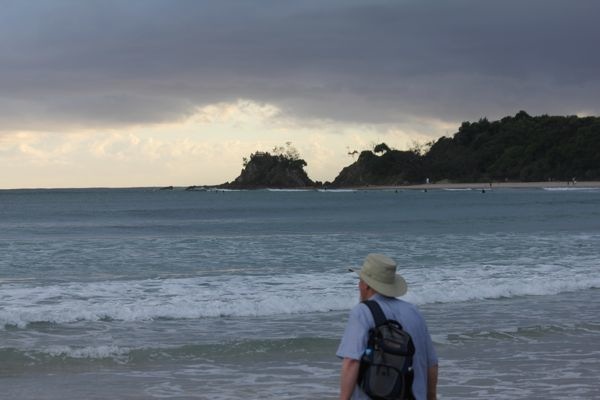
First view of The Pass with BEST2012 member
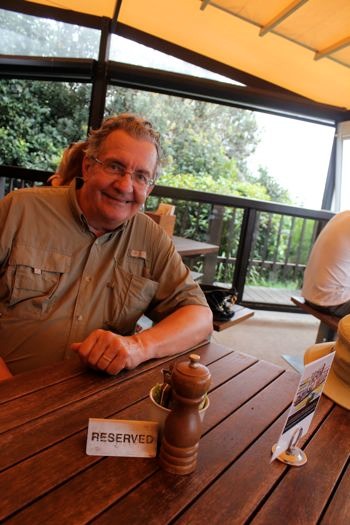
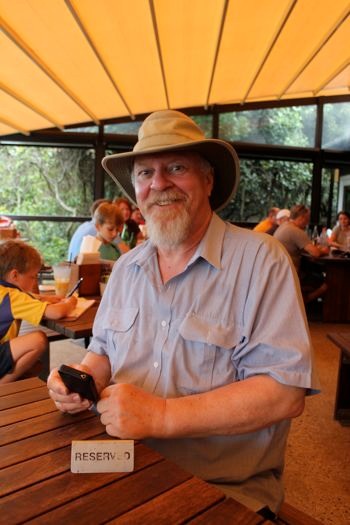
Best2012ers
11:00 am Geocaching
I found the cache I was hoping to find at Australia's easternmost point. It took a little longer than I expected as the hint about what to look for (under small rocks in a crevice in a large rock) should have read (under a rock beside a larger rock).
- GCX0QP - Easterly Extreme
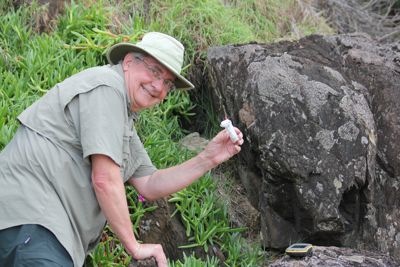
This was also a needed find for the date March 24. This cache is now my Furthest East from the Prime Meridian find, nosing out the other Australian finds on this trip.
3:00 PM Birding
Here are the birds that we identified today:
- Pied Oystercatcher (first for 2012)
- Laughing Kookaburra
- White-faced Heron (first for 2012)
- Striated Heron (first for 2012)
- Galah
- Little Black Cormorant
- Little Pied Cormorant (first for 2012)
- Australian Pelican (first for 2012)
- Little Wattlebird (first for 2012)
- Darter (first for 2012)
- Eastern Reef Egret (first for 2012)
- Brush Turkey (first for 2012)
- Great Cormorant (first for 2012)
- Sooty Oystercatcher (first for 2012)
- Black-bellied Storm-Petrel [LIFER]
- Pied Cormorant
- Grey Butcherbird
- Little Corella
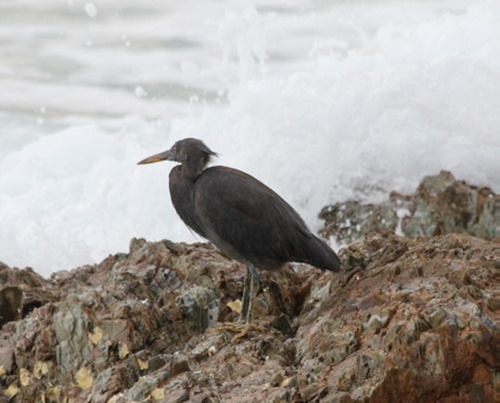
Eastern Reef Egret
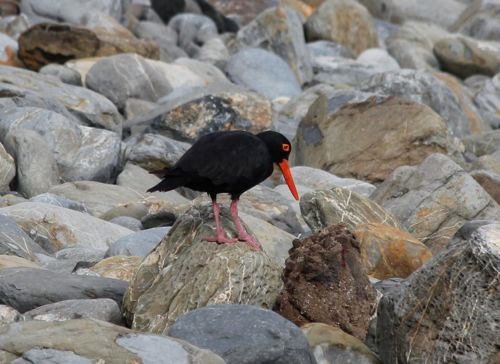
Sooty Oystercatcher
Now for some fun. I was preparing this webpage on April 24, and was reviewing the photos for March 24 when I came across one image of 4 birds that flew by us as we were walking up to the lighthouse at Byron Bay. I remember spotting the birds as they approached and realized they were different somehow. I only had time for one picture and it turned out to be very blurry and out of focus. Having said that, a noticeable feature was the white area on the upper tail. The overall color of the birds was dark grey or black. Normally the image would be too poor for an attempt at identification but the white tail, combined with the fact that they were likely seabirds, led me to see what might be a candidate. The tail was short and stubby. the wings fairly broad and the size about a foot long. I spent a few hours looking at photos on the web and noticed one of a Black-bellied Storm-Petrel that had been photographed at the Gold Coast which is about 100 km further north along the coast. Another web site said that they were common in this part of the world during November - April. Putting this all together, I feel that adding a Black-bellied Storm-Petrel to our list of Lifers is a fair decision.
In the evening we watched the fruit bats fly overhead, heading south. A number of these large bats were attacked by Currawongs, which were almost the same size. Fascinating.